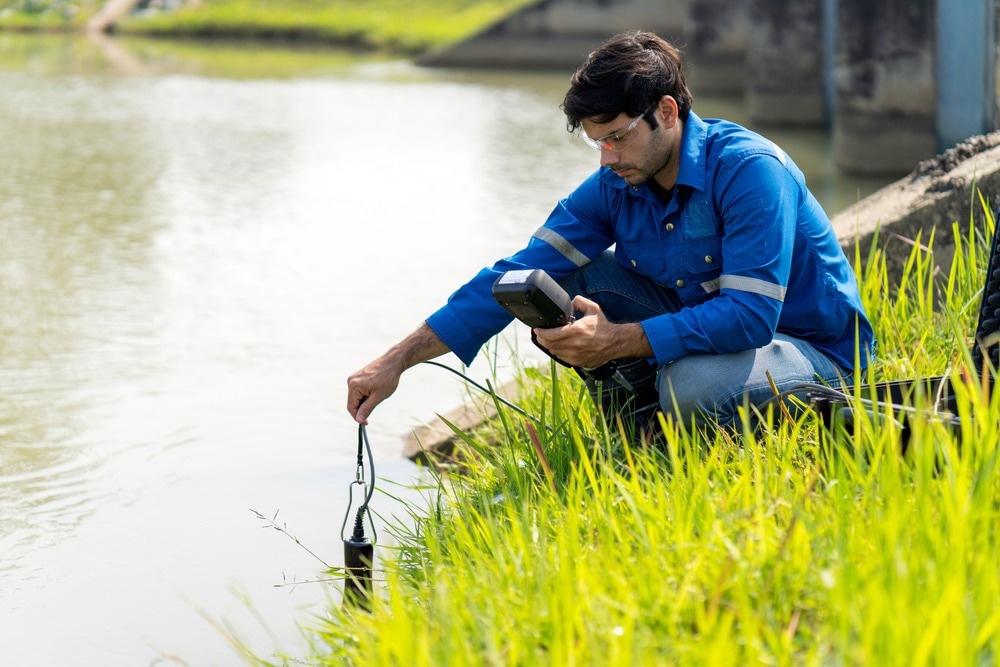Bioelectronics, a hybrid field blending biology and electronics, is making waves across industries—from medicine to energy to environmental sustainability. This emerging discipline promises to redefine the way we interact with both the biological world and technological systems, heralding a new era where the boundaries between human biology and digital interfaces blur. As we enter an age where technology is increasingly embedded in every aspect of life, bioelectronics stands poised to drive the next major technological revolution.
This article explores the intersection of biology and electronics, examining how bioelectronics is shaping the future of healthcare, energy, and other sectors, as well as what challenges and opportunities lie ahead. We’ll also look at how bioelectronics might influence the future of human-computer interfaces, wearable devices, and even sustainability.
What is Bioelectronics?
At its core, bioelectronics refers to the use of electronic devices and systems that interact with biological organisms, often at the molecular or cellular level. It combines biology with engineering principles to create devices that interface directly with biological systems. These devices can be used to monitor, enhance, or even manipulate biological processes, opening up new frontiers in medicine, biotechnology, and environmental science.
Key components of bioelectronics include biochips, biosensors, neural interfaces, and bio-integrated circuits, all of which have vast potential in various applications. The most exciting aspect of bioelectronics is its ability to merge the power of computation with the complexity of biological systems in a way that offers unprecedented control and customization.
Bioelectronics in Healthcare: Revolutionizing Medicine
Perhaps the most impactful application of bioelectronics is in healthcare. The healthcare industry is undergoing a transformation, moving from traditional, reactive treatment models to proactive, personalized care. Bioelectronics is playing a pivotal role in this shift, enabling advancements in diagnosis, treatment, and patient monitoring.
Neural Interfaces: The Future of Prosthetics and Brain-Computer Interfaces
One of the most exciting frontiers in bioelectronics is the development of brain-computer interfaces (BCIs) and neural prosthetics. These systems allow for direct communication between the brain and external devices, enabling people to control computers, prosthetics, and even robotic limbs with their thoughts.
For example, companies like Neuralink are developing implantable devices that can help people with severe disabilities regain motor function or even communicate through thought alone. These neural interfaces are not just confined to the realm of disability assistance—they also hold the potential to enhance cognitive function, treat neurological disorders, and even open up entirely new ways for humans to interact with machines.

The implications for healthcare are profound. BCIs could be used for monitoring brain activity in real-time, providing early detection of conditions like epilepsy or Alzheimer’s disease. Similarly, bioelectronics could make it possible to target and treat brain tumors or other neurological diseases with unprecedented precision.
Wearable Health Tech: Real-Time Monitoring and Diagnostics
Wearable devices like fitness trackers and smartwatches have already become ubiquitous, but bioelectronics is taking them to the next level. By integrating more advanced biosensors, these devices could monitor a wide range of health metrics in real time, from glucose levels to blood pressure to neurotransmitter activity.
This could enable continuous health monitoring and early detection of health problems. Imagine a smartwatch that can predict a heart attack or a biosensor that can detect early signs of cancer before symptoms appear. With the power of bioelectronics, such technologies are not just science fiction—they could soon be commonplace.
Gene Therapy and Bioelectronics: Precision Medicine
Bioelectronics is also contributing to the rapidly evolving field of gene therapy. With the ability to target specific genetic material, bioelectronics can help deliver precise treatments at the cellular level, potentially correcting genetic disorders or enhancing the body’s ability to heal itself.
For example, bioelectronic devices could be used to deliver electrical impulses to specific genes, stimulating or suppressing their activity. This approach could open the door to personalized medicine, where treatments are tailored to the genetic makeup of each patient, making them more effective and less invasive.
Bioelectronics in Energy: The Potential for Sustainable Power
While the applications of bioelectronics in healthcare are already well-established, this technology also has the potential to revolutionize the energy sector. By harnessing the power of biological systems, bioelectronics could create more efficient and sustainable energy solutions, paving the way for a greener future.
Biofuel Cells: Harnessing Biological Power
Biofuel cells are one of the most promising applications of bioelectronics in energy. These devices use biological catalysts—such as enzymes or bacteria—to convert organic matter into electrical energy. Unlike traditional fuel cells, which rely on expensive and environmentally harmful materials like platinum, biofuel cells offer a more sustainable and cost-effective alternative.
Researchers are working on developing biofuel cells that can power everything from small electronic devices to large industrial systems. These bioelectronic systems could offer a clean, renewable source of energy, with the potential to reduce our reliance on fossil fuels and decrease carbon emissions.
Energy Harvesting from Biological Processes
Bioelectronics also enables the harvesting of energy from biological processes. For example, scientists have explored the idea of using bioelectronic devices to capture energy from human movement, heat, or even from the natural processes occurring in plants. This concept of “biological energy harvesting” could lead to wearable devices or implants that generate power from the body’s own activities, reducing the need for external power sources.
By tapping into these biological processes, bioelectronics could create self-sustaining systems that generate their own energy, making devices like medical implants or environmental sensors far more energy-efficient and durable.
Bioelectronics in Environmental Sustainability
The potential of bioelectronics extends beyond healthcare and energy. It could also play a significant role in addressing global environmental challenges. From monitoring pollution to creating sustainable agriculture systems, bioelectronics could help tackle some of the most pressing issues of our time.
Biosensors for Environmental Monitoring
Biosensors embedded in the environment could monitor air and water quality in real-time, providing immediate feedback on pollution levels. These devices could detect harmful chemicals, heavy metals, or pathogens in the environment, providing crucial data for environmental protection efforts.
For instance, bioelectronic sensors could be used to detect harmful algal blooms in water sources, providing early warning signs before these blooms cause widespread damage to ecosystems and human health. Similarly, bioelectronic systems could be used to monitor soil quality in agricultural settings, ensuring that crops grow in optimal conditions while minimizing the use of harmful chemicals.
Sustainable Agriculture: Bioelectronics in Crop Management
Bioelectronics also has applications in sustainable agriculture. By using biosensors to monitor soil moisture, temperature, and nutrient levels, farmers can optimize their crop yields while reducing the need for chemical fertilizers and pesticides. Bioelectronic systems could even be used to monitor plant health at a cellular level, enabling early detection of diseases or pest infestations before they spread.

Moreover, bioelectronics could facilitate the development of bio-based fertilizers and pesticides, which are less harmful to the environment and human health than traditional chemical alternatives. This could help reduce the environmental footprint of agriculture and promote more sustainable farming practices.
Challenges and Opportunities
While the promise of bioelectronics is immense, the field is not without its challenges. One of the biggest obstacles is the integration of biological and electronic systems. Biological materials are often delicate, making it difficult to create durable, long-lasting devices that can function in the harsh conditions of the human body or the environment.
Additionally, ethical and regulatory issues need to be addressed as bioelectronics continues to advance. For example, concerns about privacy and security arise with the increasing use of bioelectronics in healthcare. There are also questions about the long-term effects of implantable devices and the potential for misuse of bioelectronic technologies.
Despite these challenges, the opportunities are vast. As research and development continue, it’s likely that bioelectronics will play an increasingly important role in shaping the future of technology. With the potential to revolutionize industries from healthcare to energy to environmental sustainability, bioelectronics could very well be the driving force behind the next major technological revolution.
Conclusion: The Future of Bioelectronics
Bioelectronics stands at the crossroads of biology and technology, offering transformative potential across a variety of sectors. As we continue to explore and refine these technologies, we may find that bioelectronics not only enhances our understanding of biological systems but also helps solve some of the world’s most pressing problems. From life-saving medical devices to sustainable energy solutions, the next revolution in tech could very well be powered by bioelectronics.
As we move forward, we must remain mindful of the ethical, environmental, and societal implications of these technologies. But with thoughtful development and responsible application, bioelectronics promises to open new possibilities for the future—one where technology and biology coexist in harmony to create a more sustainable, healthier world.











































